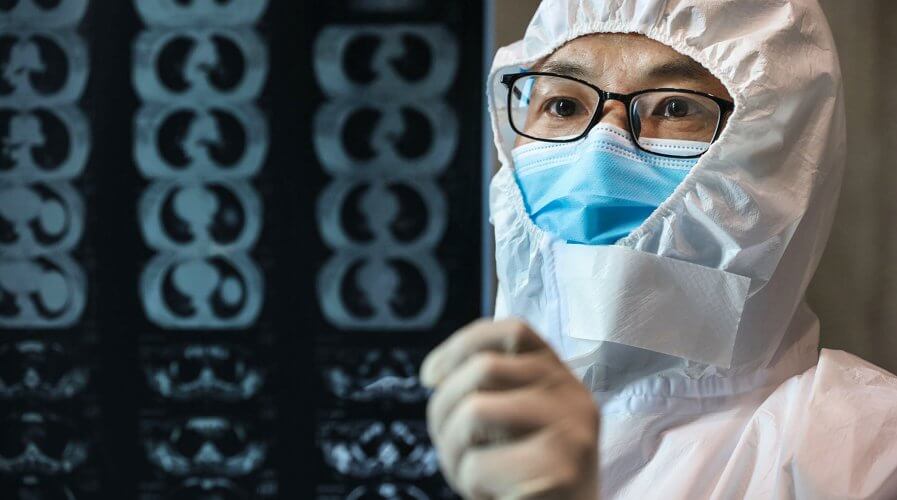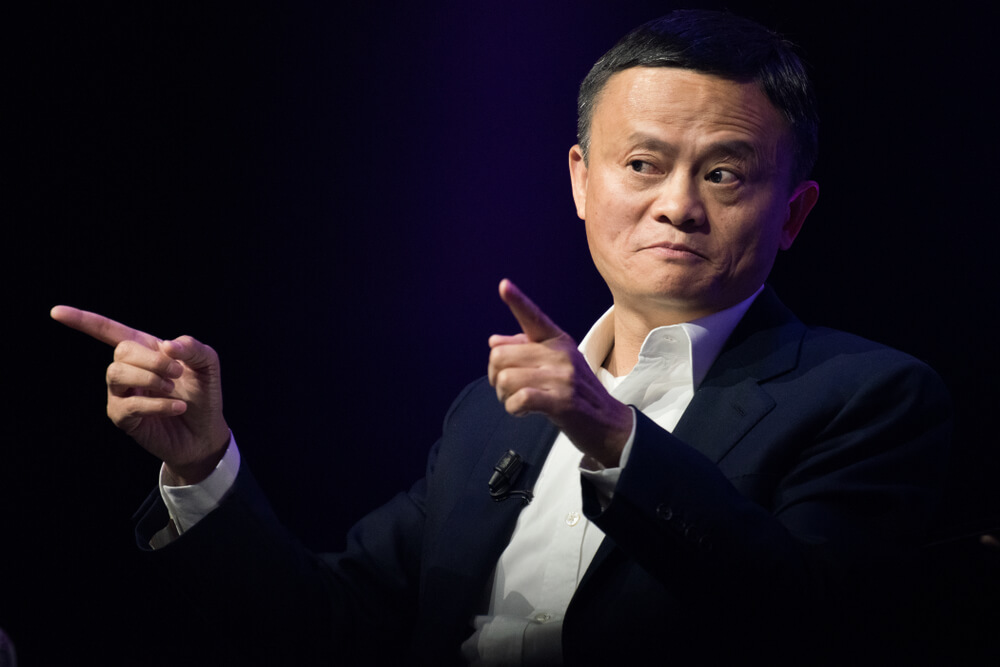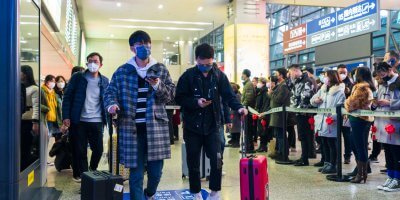
A doctor looking at a lung CT image at a hospital in Hubei province. Source: AFP
Jack Ma is bringing the ‘fight’ to the global COVID-19 pandemic
“We can’t beat this virus unless we share our resources, know-how and hard-earned lessons,’ is the message from Jack Ma, former Alibaba executive chairman and co-founder, as the Jack Ma foundation and Alibaba Foundation announces the Global MediXchange for Combating COVID-19 (GMCC).
Built in partnership with the First Affiliated Hospital of Zhejiang University – and backed by the Chinese tech titan’s Alibaba Cloud Intelligence and Alibaba Health arms – the GMCC’s mission is to facilitate “communication and collaboration across borders,” as well as providing the necessary tech firepower and data intelligence to drive research efforts around the world.

Chinese business magnate, investor and politician, Jack Ma. source: Shutterstock
The platform can provide medical teams “on the front line” with the necessary communication channels to share practical experience and information about fighting the pandemic.
Sharing our experiences will be key to winning the “inevitable battle” against COVID-19, it asserts.
The resource – assembled rapidly over the past 2 months and available for free, hosted on Alibaba Cloud – comprises comprehensive guidelines and best practice for medical professionals around the world coping with COVID-19 from China’s top experts.
Friends,
Hospitals in outbreak countries will face huge challenges coping with the surge of patients. The clinical practitioners on the front lines of China’s fight against COVID-19 have developed a handbook of treatment and care protocols for healthcare providers. (1/2) pic.twitter.com/TUCyvah7Su
— Jack Ma (@JackMa) March 18, 2020
It also details how organizations can minimize the cost and maximize the effect of measures to control the outbreak, and makes the case for hospital “command centers” when encountering large-scale emergencies.
In a foreword that thanks initiation from the Jack Ma foundation and the technical support of AliHealth, Chairman of The First Affiliated Hospital, Zhejiang University School of Medicine, Professor Tingbo Liang, said: “Faced with an unknown virus, sharing and collaboration are the best remedy.
“The publication of this Handbook is one of the best ways to mark the courage and wisdom our healthcare workers have demonstrated over the past two months.”
The guide is currently available in Chinese, English, Italian, Korean and Japanese.
Alibaba attacks with technology
Alibaba itself has not recoiled from the blow caused by the virus, since its emergence in the titan’s own backyard. The firm has been relentlessly pursuing how both its existing tech arsenal and newly-developed solutions can help tackle COVID-19, by supporting medical research and alleviating overrun healthcare facilities.
The spread of the coronavirus is highlighting the case for the further development of virtual healthcare or ‘telemedicine’ in the months to come, with the communication channel helping to reduce hospital traffic while minimizing the transmission risk to other individuals and health workers.
Alibaba revealed that its AliHealth app, hosting over 1,000 doctors, has been receiving over 3,000 consultation requests per hour. Chinese tech rival Tencent said its Wedoctor app had served up to 1.5 million consultation services by the end of February.
Over the past months, Alibaba Cloud – the third biggest cloud company globally – has made its computational platforms and resources available to 20 research groups so far, to accelerate data-heavy drug development and vaccine discovery, as well as supporting public health development efforts. That’s already led to groundbreaking results;
- The intelligent CT diagnostic system on COVID-19 pneumonia developed by Tsinghua University is able to complete diagnose of the suspected case in 10 seconds
- The bioinformatic dataset transfer rate is speeded up by 5 times, and the performance of gene assembly is accelerated by 25 percent for Sun Yat-sen University
- Jingtai technology has speeded up the drug virtual screening time from more than one month to one week
Alibaba Cloud is also helping researchers and governments predict the nature of the spread of the outbreak – such as epidemic size, peak time, lasting days, and even active infected, in a particular region – with purpose-built programs taking primary data and returning a report with a claimed 98 percent accuracy. All this can take into account different public healthcare policies and social status.
READ MORE
- Are mobile payments the future? COVID-19 could see it go either way
- Will the COVID-19 pandemic be enough to break the internet?
- Now’s the time for organizations to show their humanity
- Can cloud computing sustain the remote working surge?
- COVID-19 phishing and email scams surge in Australia


